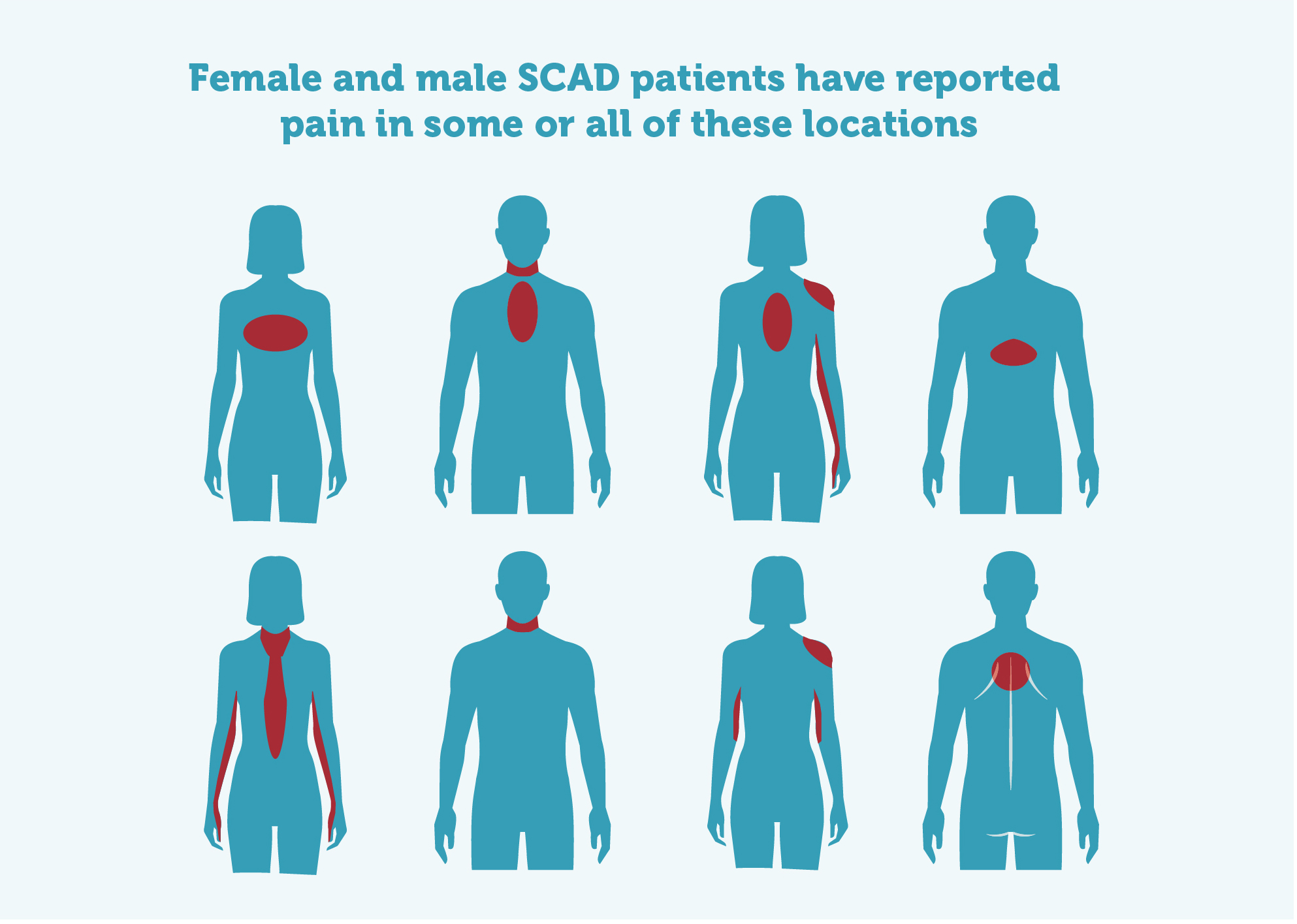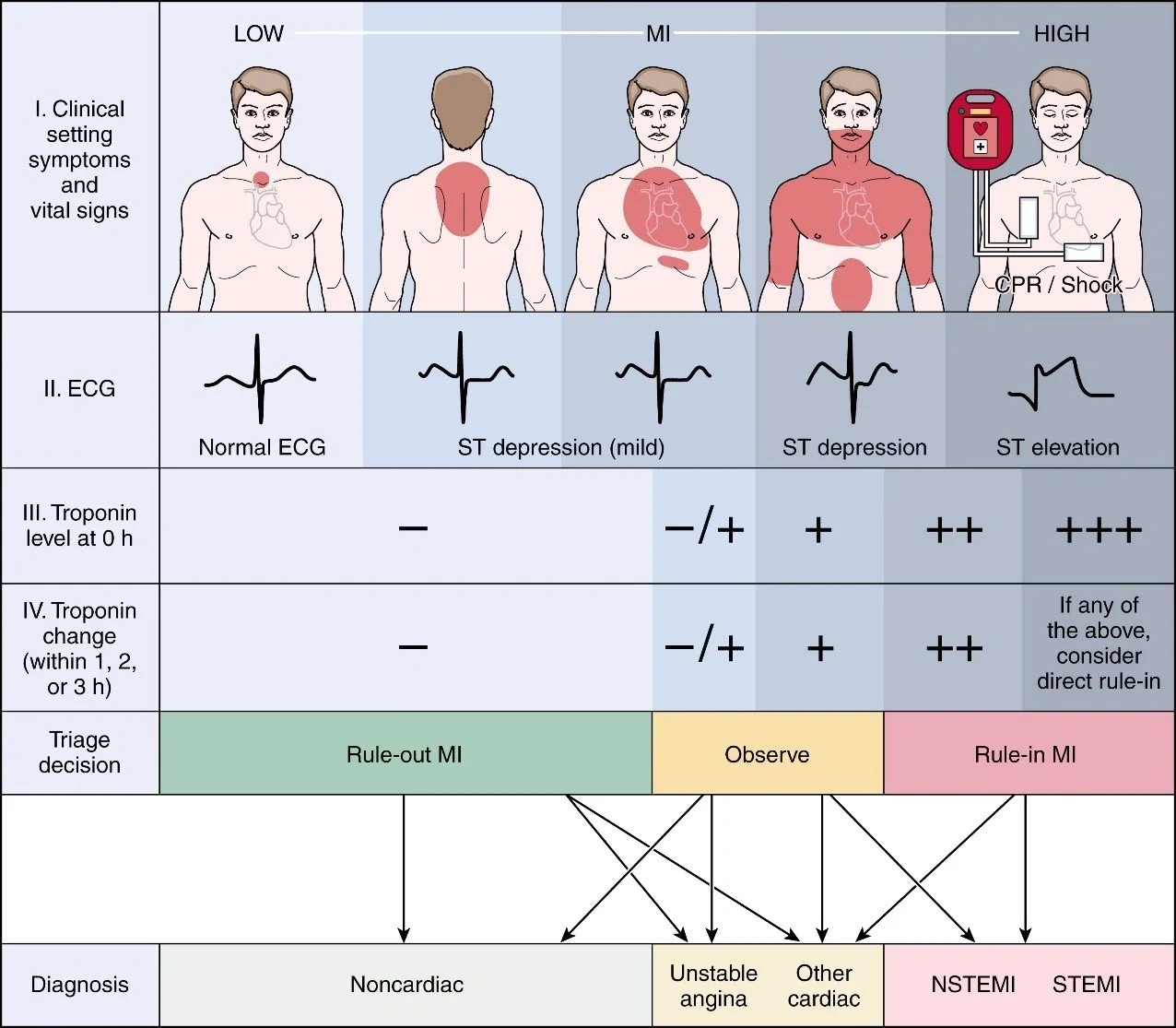
That Subtle Mistake (Yup, We All Do It)
I’m calling it out from the start: most of us, me included, mess this up. You get that strange ping in your chest and… you shrug it off. Maybe you think, it’s just stress, or you pull your best “ignore and it’ll vanish” routine. I used to do this all the time—until a close friend wound up in urgent care. It got me thinking: would I even know if chest pain meant something serious?
Turns out, where you feel the pain is more than a random detail. It’s like your body’s weird little GPS, dropping hints about what’s really going on inside. That’s where a chest pain location chart comes in. Don’t worry—this isn’t going to turn into a med school lecture. Grab your favorite drink. Let’s decode the pain together, one spot at a time.
Why “Where” Matters More Than “What”
Have you ever noticed how chest pain shows up in every TV medical drama? They never get into the details, though. Real life is messier. Chest pain isn’t just one thing. It can be sharp, dull, heavy, squeezing… heck, sometimes it even feels like heartburn after pizza night.
Doctors—actual, real-world experts, not just the TV kind—pay close attention to where your pain sits. Left, right, center, radiating down your arm? That’s basically the plot twist in your symptoms. Another small confession: I only learned half this stuff after following What causes chest pain in a woman, because women are especially good at writing off chest symptoms (I’m guilty, too).
Is It Your Heart, Muscles, or Something Else?
If you type “chest pain” into a search engine, you might stumble across all kinds of dire warnings. But wait—most chest pain isn’t heart trouble! According to clinicians, only a small percentage of ER visits for chest pain turn out to be a heart attack (Know the ABCs of chest pain).
Heart pain usually lands front and center (or left), and it feels heavy or tight. Muscle pain? More on the sides or clearly linked to movement—like a sudden jab when you twist or lift weights. Sometimes, honestly, it’s acid reflux’s dramatic encore.
Meet the Chest Pain Location Chart (The Friendly Edition!)
| Location | What It Could Mean | When to Worry |
|---|---|---|
| Center | Heart attack, aortic dissection, GERD, costochondritis | Crushing or heavy feeling, sweating, nausea—call 911 |
| Left Side | Heart disease, pericarditis, lung infection, muscle strain | Pain triggered by activity or deep breaths, history of heart disease—doctor now |
| Right Side | Gallbladder, liver, pulmonary embolism, muscle pain | Pain after fatty food, sudden sharp pain, trouble breathing—see a doc |
| Upper Chest (Front) | Bronchitis, asthma, panic attack, lung issues | Trouble catching breath or wheezing—medical advice pronto |
| Lower Chest / Upper Abdomen | Acid reflux, ulcers, hernia | Burning pain after food, pain worsens lying down—persisting? Check it out |
| Left shoulder/arm | Classic heart attack (especially for men), angina | Radiating pain, especially with pressure—emergency care |
| Right shoulder | Gallbladder, muscle injury, inflammation | Pain that gets worse after eating, or with movement—see a doc |
| Between shoulder blades | Aortic tear, esophagus spasm, heart issues | Tearing pain or sudden onset—get help, don’t hesitate |
(I keep a screenshot of this kind of chart on my phone, honestly. It’s been that useful.)
Left Side: Not Always the Heart?
So let’s move to the most infamous spot—the left side. Panic sets in fast here. I had one of those late-night wake-ups once: a weird pressure on the left, radiating to my shoulder. My brain went straight to “heart attack!”
But here’s the twist: left-side pain isn’t always about your heart, but…sometimes it really should be checked, especially for women. What causes chest pain in a woman broke it down for me—women often get milder chest pressure paired with breathlessness, nausea, or even jaw pain. We’re notorious for powering through these symptoms, thinking it’s just nerves. You know what? Delay can be a big risk. So if you have pressure, pain with exertion, or anything that feels out of the ordinary for you, get it checked.
The Extra Signs You Shouldn’t Skip
Red flag time—if you also notice:
- Shortness of breath (not just after running for the bus)
- Cold sweat or feeling suddenly clammy
- Pain radiating down the left arm or into your jaw
- Fatigue that hits hard and fast
- Nausea (yep, it’s not just bad sushi)
…these are your cue to drop what you’re doing and call for help. Every minute here counts, especially for us ladies, since our warning signs can sneak under the radar compared to men (Know the ABCs of chest pain).
Center of Chest: More Than Just Heartburn
Now, let’s zone in on smack-dab center chest pain. This is where things get tricky, because—a little honesty—sometimes it’s dinner’s revenge (looking at you, late-night tacos). Other times? Totally different.
Central chest pain shows up for heart issues (think acute pressure during exercise), but it’s also notorious for mimicking with stuff like acid reflux, anxiety, even costochondritis (that’s just the fancy name for sore cartilage where your ribs meet your breastbone—who knew?) If pressing on your chest triggers your pain, it’s probably not your heart but a muscle or joint ache. Chest pain that lasts for seconds or is directly linked to movement is much less likely to be dangerous (Acute Chest Pain Care Guide).
Personal confession: When I had heartburn right in the middle of my chest, I almost grabbed my car keys for the ER—until I realized it happened every time I ate spicy food and got better with antacids. If you have pressure that won’t go away, or it comes with any of those “extra” symptoms, play it safe.
Especially for Women: It’s Not All About Pressure
A lot of women describe the pain as burning, mild, or just feel “off”—not textbook crushing pain. One of my closest friends described her female pain in middle of chest as if something “tugged” at her chest, not full-force pain. She went anyway. (Good call.) You know your body—trust it.
Right Side and the “Weird” Spots
Let’s swing to the right for a second (hand on heart, how many of us just ignore right-side pain?). It doesn’t get the spotlight, but it’s just as important.
Right-sided chest pain is more likely to be muscle, gallbladder, or—occasionally—lungs. I tweaked something once doing burpees… sudden jab on the right, hurt to move, totally fine at rest. That’s classic muscle strain. If the pain starts after a fatty meal, think gallbladder. Did you just get over a cold? Sometimes coughing pulls a muscle or triggers pain with deep breaths. Most right-side pain isn’t a heart attack—that’s more left or center—but if it’s sudden and severe, don’t mess around.
When Pain Travels (And When You Should Worry)
Sometimes chest pain doesn’t stay in one spot—it loves to travel. Down your arm, up into your jaw, even between the shoulder blades. That “tearing” feeling between your shoulders? Could be something really serious like an aortic tear (Some causes of chest pain). If you ever experience sudden, severe pain that radiates, don’t Google it. Call for help, fast.
But don’t forget—mild pain with movement is still usually muscular or from your joints. Just… don’t ignore it if something feels truly off.
Quick Thought: Why Chart Location Helps
A chest pain location chart is all about patterns. Where you point tells your story: heart, muscle, lung, or even digestive issue. Medical staff actually use these charts and ask you to “point to where it hurts most”—not just to annoy you, but because location + symptoms = big diagnosis clues (Chest Pain Location Charts – Carepatron and Chest Pain Location Chart: What Each Area Tells You).
Your Game Plan: What (Exactly) To Do Next
Okay, so you’ve found your spot on the chart. Now what?
- If pain is sudden, crushing, radiates, or comes with trouble breathing or weird sweating… call 911, don’t wait.
- If pain happens with exercise, or you have other risk factors (high blood pressure, diabetes, family history)—check in with your doctor.
- If pain is mild, linked clearly to movement or meals, and goes away with rest—it’s likely not an emergency, but track it. Write down what brings it on, what helps, and how long it lasts. No shame in asking your doctor for peace of mind.
- If you’re a woman? Read up on What causes chest pain in a woman and female pain in middle of chest—I did, and I learned a ton.
Don’t Play the “Tough It Out” Game
I get it—nobody wants to look dramatic. I’ve absolutely waited things out before, hoping they’d just go away. But tiny delays can make a big difference, especially for heart stuff. Sometimes, it’s not about being “tough”—it’s about being smart.
Everyday Tips to Keep Your Chest (and You) Happy
I wish I could say, “Follow this and you’ll never get chest pain again,” but you know life doesn’t work like that. What you can do?
- Move more, but respect your limits. Don’t push through sharp pain.
- Avoid super fatty meals, especially late at night if you get reflux. (Ugly but true.)
- Stay on top of your stress levels—sometimes anxiety fakes heart or chest symptoms.
- If something feels “off” in your chest, even if it isn’t pain, jot it down. Patterns help your doctor find answers.
I keep a basic symptom journal in my notes app. One line per day. Game-changer.
Let’s Wrap This Up (You’ve Got This)
Take a breath. It’s a lot, right? Here’s what I hope you’ll take away: knowing the exact spot of your pain could give you (or someone you love) a real edge. Only a small percent of chest pain is a true emergency—but that doesn’t mean you should ignore it. The chest pain location chart helps you separate “need help now” from “keep an eye on this.” Left? Could be heart—act fast. Center? Try antacids, but don’t wait if it’s heavy and won’t quit. Right or with movement? Probably muscle, but check if it lingers. Radiating or tearing pain? Don’t hesitate: call for help.
And seriously, check out What causes chest pain in a woman and female pain in middle of chest. We’re all guilty of brushing symptoms aside, but it’s time to get savvy and take control of our well-being. What’s one small tweak you’ll try this week? Keep listening to your body—a little knowledge, a quick check-in, and maybe a screenshot of that chart… it could make all the difference. Stay curious, stay safe, and keep moving forward. I’m rooting for you—always.


















Leave a Reply
You must be logged in to post a comment.